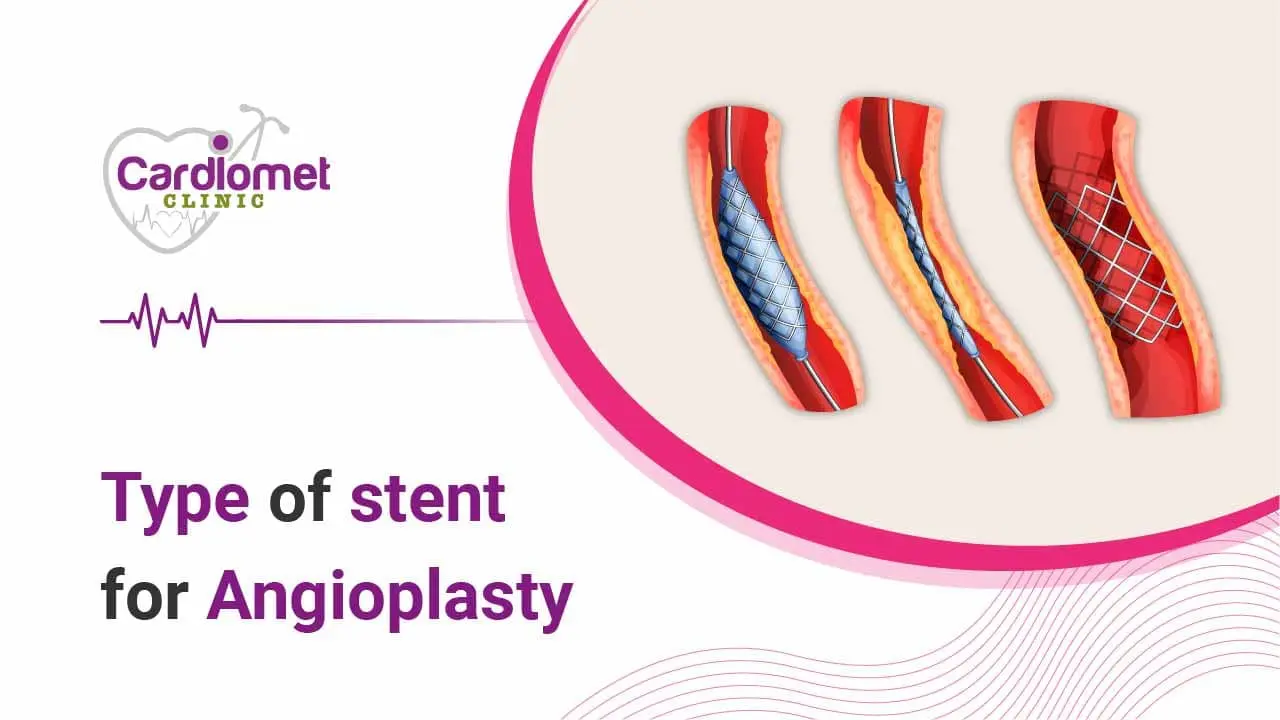Types of stents for Angioplasty & how to choose Best for You
If you are someone who is living with heart disease, you know that the treatment of coronary artery disease often involves an angioplasty procedure, where a device known as a stent is Placed by a Cardiologist to open blocked arteries.
Depending on your specific medical history, there may be different types of stents available for insertion.
This blog post will explore all your options.We’ll review what each type of stent offers in terms of improved cardiac health outcomes, as well as offer advice on how to make sure the best decision is made when selecting which one fits your needs and situation best.


- What You Get From This Article:
What is Angioplasty?
Angioplasty is a procedure that involves the insertion of small tubes, known as catheters, into your arteries.
These Catheters are connected to a balloon, which is then inflated inside your artery and helps to open up the blocked area.
A stent may then be placed to keep your artery open and ensure blood can flow freely through it.
Types of Stents
There are three main types of stents used in Angioplasty procedures: bare-metal stents (BMS), drug-eluting Stents (DES), and bioabsorbable stents.
The type Chosen by your Cardiologist will depend on the severity of your blockage, your age, your medical history, and other factors.

- Bare-Metal Stents (BMS):
- Drug -Eluting Stents(DES) :
- Bio Absorbable Stent:
These stents are made from stainless steel or cobalt chrome and offer a permanent, physical support to the artery wall.
They can reduce symptoms associated with heart disease but may cause scarring, which can lead to future blockage.
As the name suggests, these stents are coated with drugs that help to prevent scar tissue formation and future blockages of the artery.In addition, they also release medications over time, which help reduce inflammation and improve blood flow in the area.
DES has been linked to fewer long-term complications than BMS and tend to be recommended for more complex cases or those who have had previous stent placement.
This is made of magnesium alloy. gets dissolved in 2 years. However, it is not suitable for elderly people with calcium.
Also Read : What is the cost in India of a stent used in angioplasty?
How To Choose The Best Stent For You?
When it comes to selecting the best stent for your specific needs and medical history, always consult with a cardiologist who is familiar with angioplasty procedures.
They will be able to offer guidance on which type of stent is most suitable based on your individual case. Additionally, they can provide advice on lifestyle changes that may help reduce risk factors such as high blood pressure or cholesterol levels.

By following the advice of an experienced cardiologist , you can make sure that you are receiving the best possible treatment for your condition and improve your overall cardiac health outcomes.
Are you a Heart patient in India looking to better Understand the cost of Angioplasty Stents? Your health should never take a Backseat. by concerns about the cost of stents in Angioplasty.
At our Cardiomet Clinic, we prioritize your well-being, offering competitive pricing for Angiography, Angioplasty treatment in Pune to ensure access to life-saving procedures.
Heart stent recovery time
The recovery time for angioplasty and stent placement varies, so it is important to discuss this with your doctor prior to the procedure.
Depending on your individual situation and health history, some people may experience a short recovery period of one or two days while others may need more time.
In general, though, it usually takes around four weeks before you are able to resume normal activities and start feeling better.
It is also important to follow any lifestyle change recommendations provided by your doctor, as they can help reduce your Risk of future blockages and improve overall outcomes.
This could include quitting smoking, eating a healthy diet, or exercising regularly. Your cardiologist will be able to provide specific instructions on what you should do after the procedure and provide any necessary follow-up care.
What to expect after stent surgery?
After a stent is inserted, your doctor will monitor you closely to ensure everything is going as expected. This may involve taking regular tests or scans to check for any potential complications.
Conclusion
Angioplasty with stenting is a common and effective treatment for coronary artery disease and can help reduce the symptoms associated with it.
By understanding all your options, consulting an experienced cardiologist, and following lifestyle recommendations, you can make sure that you are taking the best steps possible towards improving your cardiac health outcomes.
Hopefully this post has provided some helpful information on angioplasty and stent placement and what to expect during the recovery process.
If you have any questions or need further advice on this topic, please don’t hesitate to contact your doctor or healthcare provider. Good luck!




